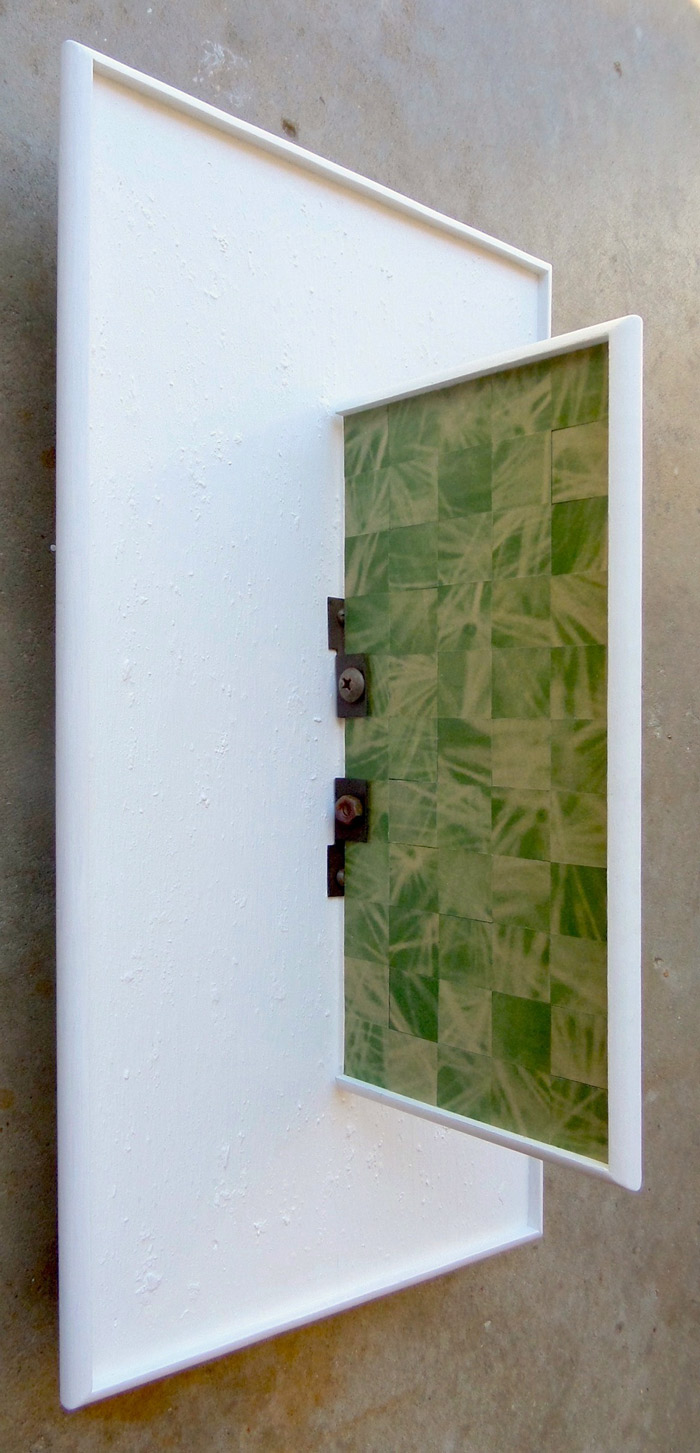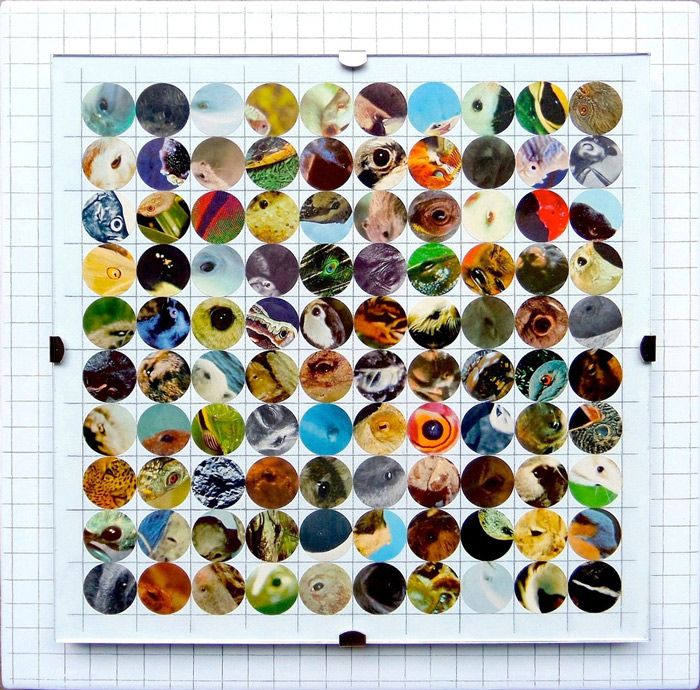Brian Schorn
 12″x18″x1″; cabinet door, sign letters, acrylic; 2018 Brian Schorn STATEMENT As an artist and as a human being, I seek to explore the transmutation of matter and mind for the benefit of all. Therefore, I am interested in contemplative art practices that focus on a variety of subjects such as ordinary perception and awareness, interconnectedness, impermanence, equanimity, non-duality and the wonder of natural history. With this approach, I seek to research and experiment with meditative states and visual spaces that are free from suffering, thus offering a path to an enlightened manner of experiencing the world around us. With the use of found and natural materials (acknowledging our deep connection to our environment), humor (light and open approach to life), simplicity (less is more) and a heightened attention to process (i.e. grinding charcoal in a stone to make ink for calligraphy), I seek to engage the world in a curious, spacious, and open manner. Ultimately, my contemplative art practice is an ongoing attempt to see things as they are and to work with things as they are. Or, it may challenge me to ask a simple Zen question such as, “What is it, really?” Commonly, I use two themes to interconnect the material (matter) and spiritual (mind) aspects of my work. These two themes are wabi-sabi and the enso. First, the Japanese concept of wabi-sabi, is an aesthetic that embraces, and sees beauty in, objects that are imperfect, incomplete and impermanent. Since found and natural everyday objects provide the primary material for my work, the objects I tend to collect are rusted, withered, rotten, broken, cracked and faded after use and natural decay. Second, the work includes a complimentary exploration of the enso, a Japanese calligraphic brush mark often created by Zen monks as a form of meditation. The enso suggests not only a moment of enlightenment but the cyclic nature of all things as they move through the stages of their existence: beginning, ending and returning (recycling). BIO Brian Schorn is a multi-disciplinary artist working out of his Studio Rubedo workshop in a small, rural town in Michigan. He grew up on the wild shoreline of Lake Huron, attained the rank of Eagle Scout, was a National Honor Society member in high-school and, after graduation, attended college as a biology major/pre-med student. His interest in nature, science, and photography eventually led him to study fine art in a variety of media. His college education includes a BFA in fine art photography and MFA degrees in fine art photography, graphic design, creative writing and electronic music. Since the 1990s, he has taught visual art, photography, comparative art, digital art, sound art, graphic design and creative writing at institutions including Interlochen Arts Academy, University of Michigan, Brown University, Eastern Michigan University and Grand Valley State University. He was awarded an Arts Education Grant in New York through Arts Mid-Hudson where he worked with 3rd–5th graders developing a collaborative, environmental art installation. Also, he frequently contributes to art exhibitions and publications as a curator, juror, and designer. Schorn’s visual art has been exhibited and published widely throughout the country since the early 1980s. Recent solo exhibitions include “Comstock Wabi-Sabi” in Nevada, “Lost and Found” in New York and “Magnum Opus: A 25 Year Retrospective” in Michigan. Other recent group exhibitions include “Practice, Rhythm and Ritual: Meditative Minimalism” and “Tinker, Tailor, Welder, Weaver: The Art of Assemblage” at Crooked Tree Arts Center in Michigan; “The New Digital Art Biennale,” a virtual gallery organized in Brazil; “Snap to Grid” at the Los Angeles Center for Digital Art and “An Homage to Kurt Seligmann” at the Seligmann Center for Surrealism in New York. He has attended artist residencies across the country including Iowa Lakeside Lab in Milford, Iowa; Resident Artist Program in Silver City, Nevada; I-Park Artists Enclave in Connecticut; and Ox-Bow Artist Residencies in Michigan. Work from his residency in Nevada is currently touring the state in a variety of business and educational locations. Schorn’s art is represented by Michigan Artists Gallery, Crooked Tree Arts Center and Rogue Nevada. His art is also in numerous private collections as well as the public collections of Seligmann Center for Surrealism, Berkeley Art Museum’s Pacific Film Archive, University of Michigan Art Museum, Besser Museum of Art, Science and History, and the Washington Pavilion of Arts and Science. ARTIST CONTACT [click to email] IMAGES  8″x8″x2″; found wooden chair, acrylic; 2019  19.25″x10.5″x7″; found wood, cut-up book pages, acrylic; 2017  14″x14″x2″; found wood, cut-up book pages, glass, graphite, acrylic; 2017  26″x26″x2″; wood, cross-stich material, buttons, thread, acrylic; 2018 |
